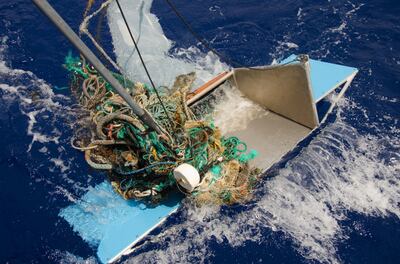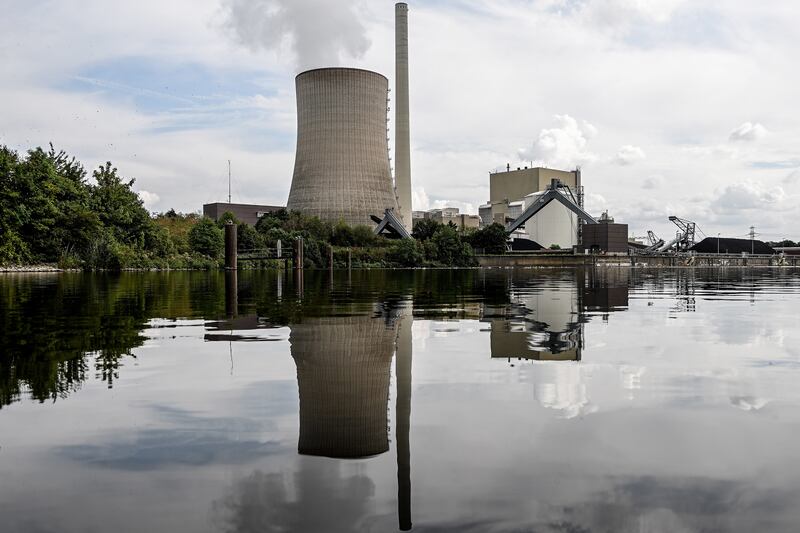Funnels are great things. They allow you to pour a liquid, or a heavy gas, into a container that has a narrow neck. Like pouring oil into a bottle. I have been thinking more and more about reverse funnels – smoke stacks that, from a point-source, such as a factory, spew various gasses from a narrow spout out into the open environment; essentially from a concentrated source to a dispersed open vessel.
The same could be thought of in terms of plastics. Factories, which are the equivalent of the narrow-neck bottle, churn out concentrated plastics in the form of products that ultimately find their way as pieces of varying size into every corner of the world. Take this concept further, and we’re talking about the externalities of economic productivity. They are, in other words, the impact on the wider environment (however defined) of producing, distributing and retailing a product or a service.
They, of course, include the greenhouse gas emissions associated with almost all our production processes.
Until recently, emitting the stuff has been entirely “free”, or at no cost to the producer. The consequent impact was not included in the “cost” of the final product. That’s because, well, you just pump the stuff into the air and then it’s gone, right? The logic was that “dilution is the solution to pollution” because the atmosphere (or the oceans for that matter) is so large that spewing some gas into it would not alter the balance. That’s until the emissions were so large that they do alter the balance and we feel the impact.
And it does not stop at the atmosphere and the oceans. Our bodies are also ready recipients of various externalities that have been demonstrated to cause life-threatening disease. Allergies, asbestosis, various cancers (including lung), to name but a few, are the direct result of us stuffing our bodies – voluntarily or not – with externalities.
Taking the impact of externalities a little further still, we might think of effects on the workforce (mental health, accidents on the job), and on wider society in terms of opportunities, obligations and equity, for example.
For centuries, even millennia, externalities were ignored by and large, as part of a necessary consequence of production, or even explained away because they were uncomfortable or too expensive.
To simplify but sharpen the point even further, our economies have grown thanks to externalities. We are at a tipping point where we are not only seeing a reversal, but the next big business opportunities and business models are about reversing the process and making money off internalising these externalities.
We have inherited this externalised world, and now our survival hinges on cleaning it up.
We might coin a new term – like the reversal economy, or the internalised economy – to drive home the need and the concept. It’s already happening; carbon removal credits are doing exactly that, as they are essentially a financial reward for taking greenhouse gases out of the atmosphere and locking them away, in an effort to reduce climate change.
This is where the funnel analogy is helpful again.

Current technology uses large fans to extract and concentrate carbon dioxide from the air, and then injects it into rocks, removing the stuff forever. Similarly, startups have been popping up to address the mental health challenges we are familiar with. Same for plastic removal initiatives big and small: microplastic-eating bacteria that are being engineered at universities around the world, and the efforts by the non-profit Ocean Cleanup to tackle the Great Pacific Garbage Patch. Some reversal economy pioneers are using the latest technology. Crispr, the tool that allows for genetic manipulation, is being used by Nobel Prize winner Jennifer Doudna to “enhance the natural ability of plants and soil microbes to both capture and store carbon from the atmosphere”.
The intent of the reversal economy is not new but faces the continued challenges of providing a sort of public good.
Public goods are products, activities or services that have collective rather than individual benefit. While most of the traditional economy has been the opposite: conferring a benefit whether in the form of a profit or a product, to individuals or specific target groups. In the reversal economy, everyone stands to benefit from reducing the load of greenhouse gases in the environment. In the reversal economy, everyone benefits from clean water and oceans. In the reversal economy, everyone benefits from positive mental health.
Alas, it is still more common to see funding going to products and services that provide immediate benefit, pleasure and profit to the customer. Many of the digital economy businesses continue to create new externalities in the form of financial loss or mental health issues. But I am hopeful that the future transition from externalising economies to internalising economies is imminent.
It will not happen without the proper policy inputs, such as requirements to include externalities in product costs. So, next time we purchase, consume, work on, or invest in anything, we must ask ourselves which end of the funnel are you on – the narrow neck that only benefits you and the manufacturer, or the wide rim that has amplified and social benefit.
The choice is ours and the shift towards the reversal economy could be that simple.





